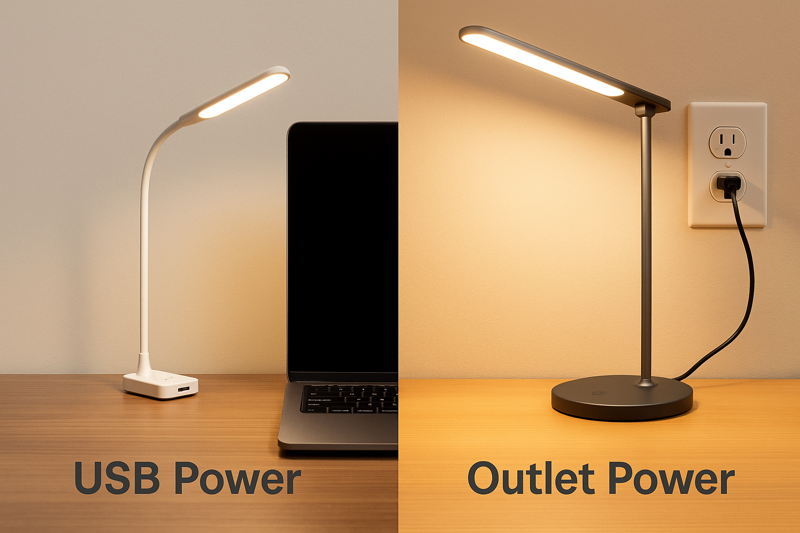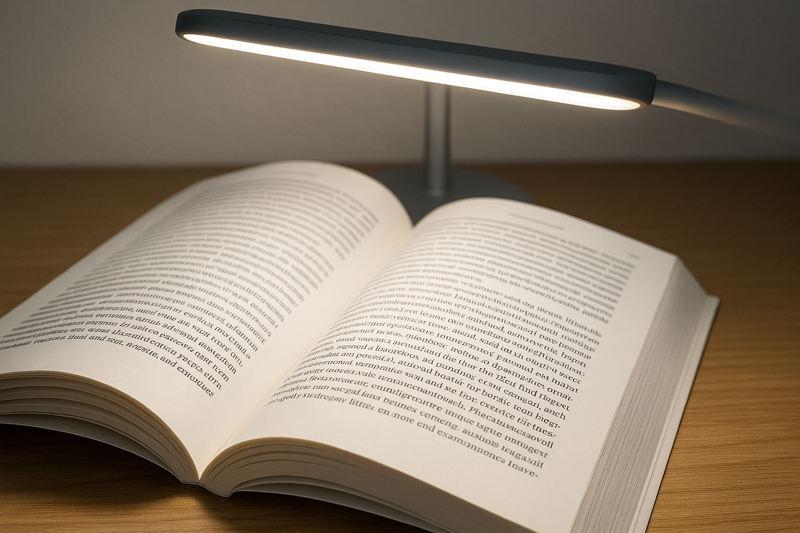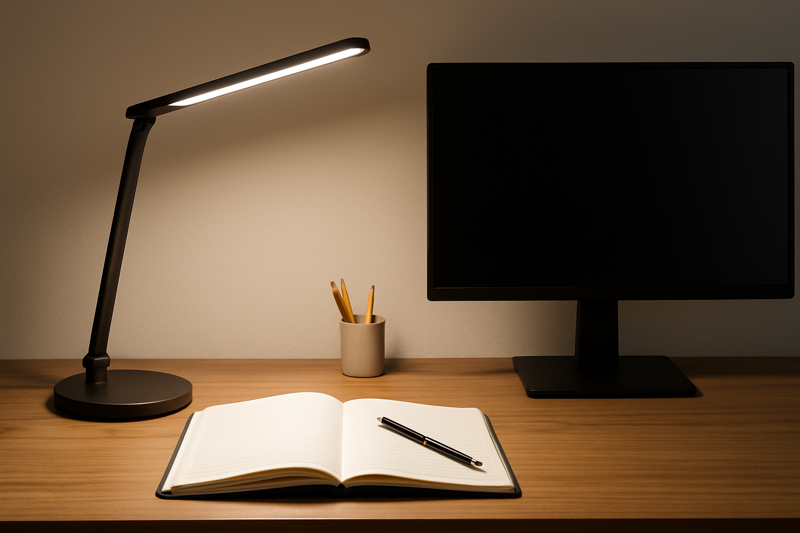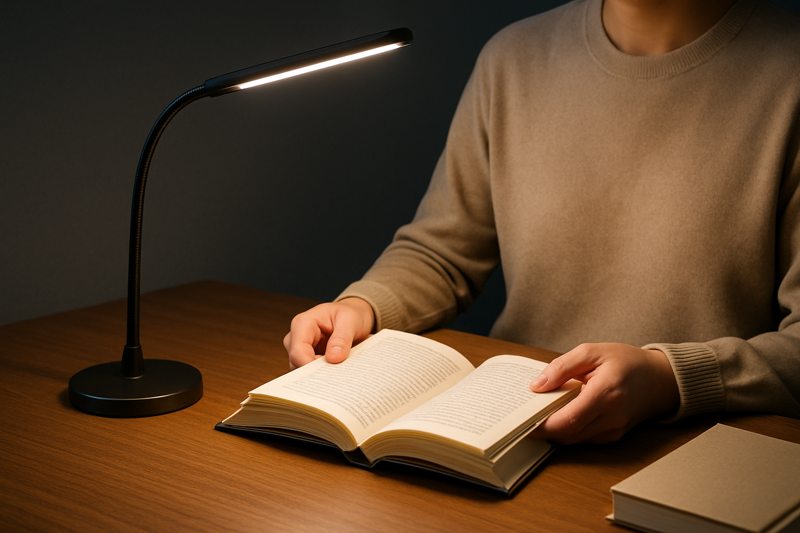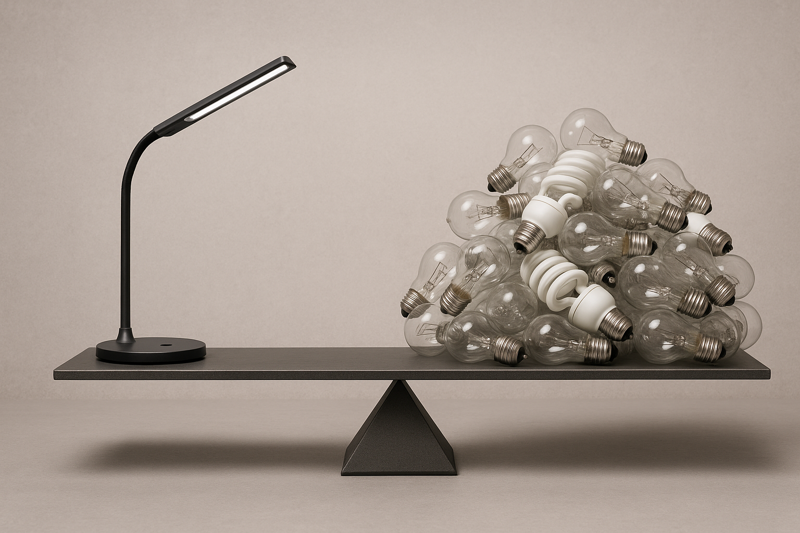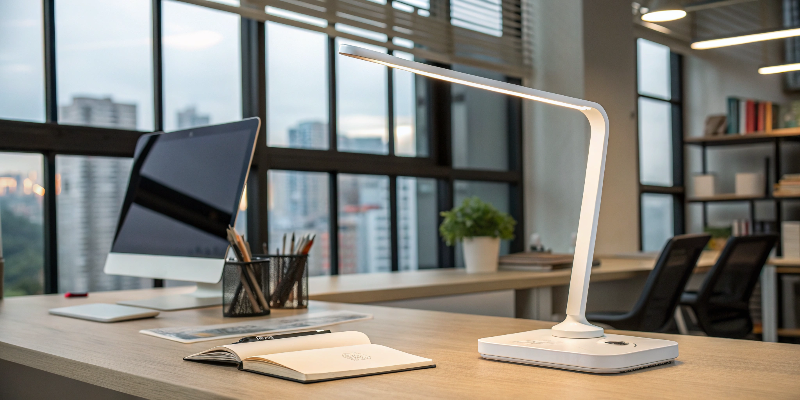
Setting up your desk lamp correctly is crucial for creating a well-lit, comfortable, and productive workspace. Here are some tips to ensure you get the most out of your desk lamp setup.
A properly positioned and well-chosen desk lamp can improve focus, reduce eye strain, and enhance your overall productivity.
Let’s walk through the essential steps to set up your desk lamp and solve common issues.
How do you set up a light desk?
Are you unsure about the best way to set up your desk light? Let’s simplify the process.
Setting up a desk lamp requires considering your desk size, work habits, and the light’s purpose.
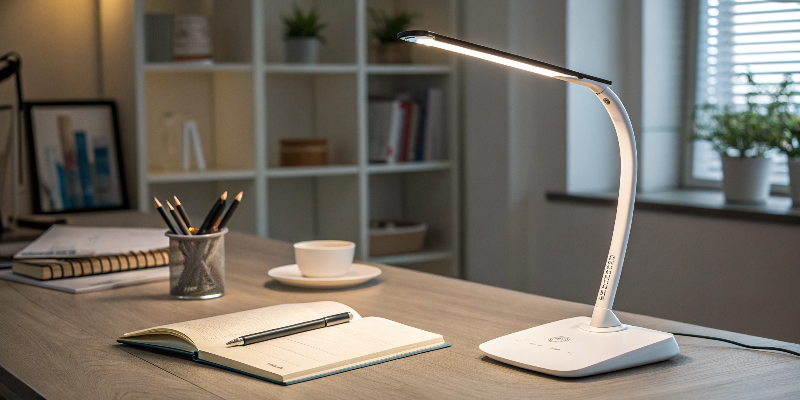
Steps to Set Up a Desk Lamp
- Choose the Right Lamp: Pick a lamp that fits the size of your desk and provides enough light for your tasks (task lamps or adjustable LED lamps work best).
- Position the Lamp Correctly: Place it in a position where it illuminates your workspace without creating glare or shadows.
- Use Task Lighting: If you do specific tasks like reading or writing, ensure your lamp provides focused, bright light without being too harsh.
- Adjust Brightness: Many desk lamps have dimming features. Set the light at a comfortable level depending on your work.
- Ensure Stability: Make sure the lamp’s base is stable to avoid tipping over, especially if it’s adjustable.
Following these steps ensures that your desk lamp is set up for maximum efficiency and comfort.
Are LED desk lamps good for your eyes?
Wondering if LED desk lamps are a good choice for your eye health? Let’s explore.
LED desk lamps are a popular choice for protecting your eyes, thanks to their energy efficiency and ability to provide bright, consistent light.
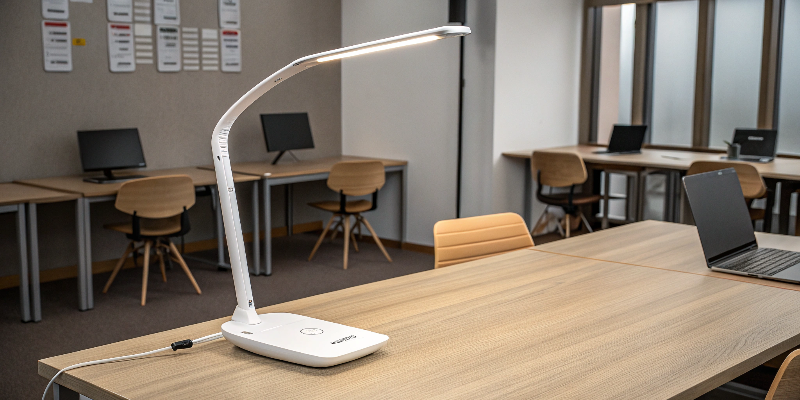
Why LED Desk Lamps Are Good for Your Eyes
- Flicker-Free Lighting: LED lamps typically don’t flicker, reducing strain on your eyes.
- Adjustable Brightness: Many LED lamps offer dimming features, allowing you to adjust the brightness to your task and reduce eye fatigue.
- Blue Light Filtering: Some LED desk lamps come with blue light filters to minimize the harmful effects of blue light exposure, especially when working on screens.
- Natural Light Simulation: Certain LED lamps simulate daylight, which is easier on the eyes and can improve focus.
LED desk lamps are an excellent option for reducing eye strain, especially when you spend long hours working.
Why is my LED desk lamp not working?
Are you facing issues with your LED desk lamp? Here are some possible causes and solutions.
LED desk lamps can stop working for various reasons, but most issues are easy to fix.
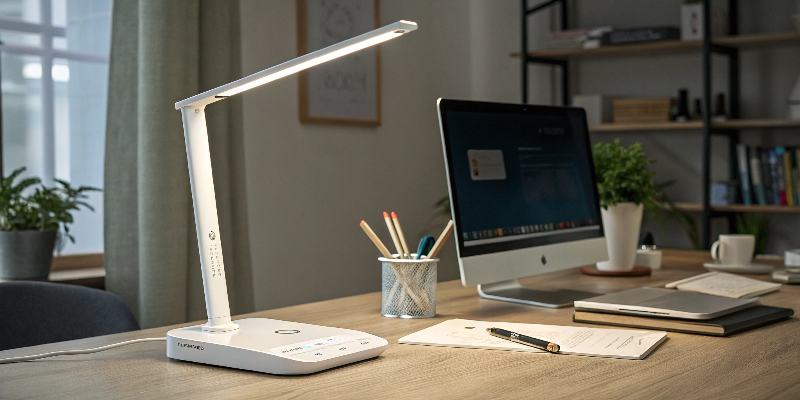
Common Reasons for LED Lamp Malfunctions
- Power Issues: Check if the lamp is plugged in properly or if there’s a loose connection. Test the outlet by plugging in another device.
- Burnt Out LED Bulb: Although LEDs last a long time, they can burn out. Try replacing the bulb if your lamp uses a replaceable LED.
- Faulty Switch or Wiring: The switch or internal wiring might be malfunctioning. If this is the case, you may need to contact a professional to repair it.
- Overheating: LED lamps can overheat if left on for long periods. Ensure the lamp is in a well-ventilated area and turn it off periodically.
Identifying the cause of the issue can help you resolve it quickly and get your LED desk lamp working again.
Is it safe to leave a desk lamp on all night?
Are you wondering if it's okay to leave your desk lamp on overnight? Let’s clarify.
It’s generally safe to leave a desk lamp on overnight, but there are some important considerations.
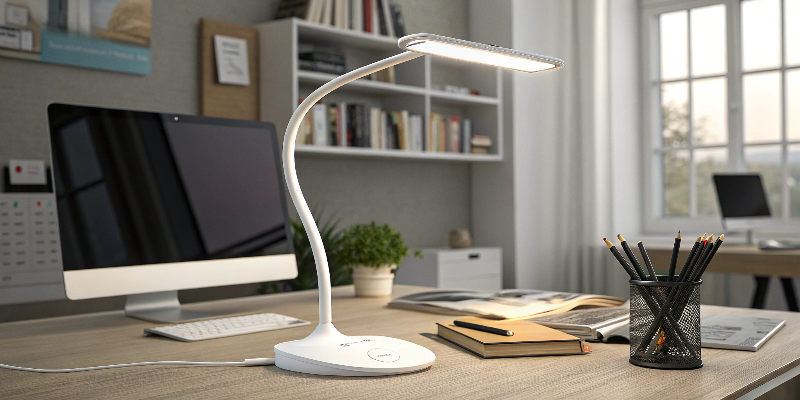
Safety Considerations for Leaving a Desk Lamp On
- Energy Consumption: Keeping a lamp on all night consumes energy, especially if it’s an incandescent bulb. LED lamps are more energy-efficient and better suited for longer use.
- Overheating: Although LEDs are designed to stay cool, other types of bulbs (like halogen or incandescent) can overheat if left on for extended periods.
- Fire Hazard: Any electrical appliance left on for long periods can pose a risk. Ensure your lamp is in good working condition and avoid placing it near flammable objects.
If you need a light for nighttime reading or work, consider using an energy-efficient LED lamp with a timer or automatic shut-off feature to avoid unnecessary risks.
How should desk lamps be positioned?
Wondering about the best placement for your desk lamp? Proper positioning is key.
The way you position your desk lamp can help reduce glare, prevent eye strain, and enhance your work environment.
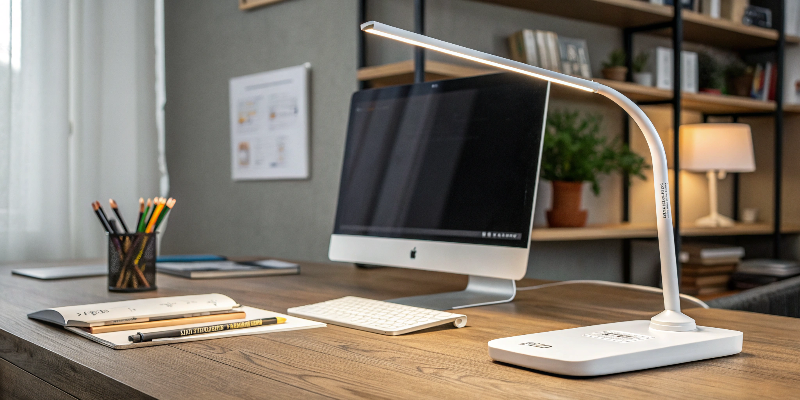
Tips for Positioning Your Desk Lamp
- Position Above or to the Side: Place your lamp to the left or right of your desk, depending on whether you’re left- or right-handed. Avoid placing it directly in front to prevent shadows.
- Angle the Light: Direct the light at a 45-degree angle to avoid harsh glare on your screen or workspace.
- Adjustable Lamps: Use lamps with adjustable arms or heads so you can easily direct the light to where you need it.
- Avoid Glare on Screens: If you use a computer, ensure the light is not directly facing your screen to prevent glare.
Proper lamp positioning ensures that your workspace is lit evenly without causing discomfort or distractions.
How does a desk lamp work?
Curious about the mechanics behind desk lamps? Here’s a simple explanation.
Desk lamps work by converting electrical energy into light through various types of bulbs, like LED, halogen, or incandescent.
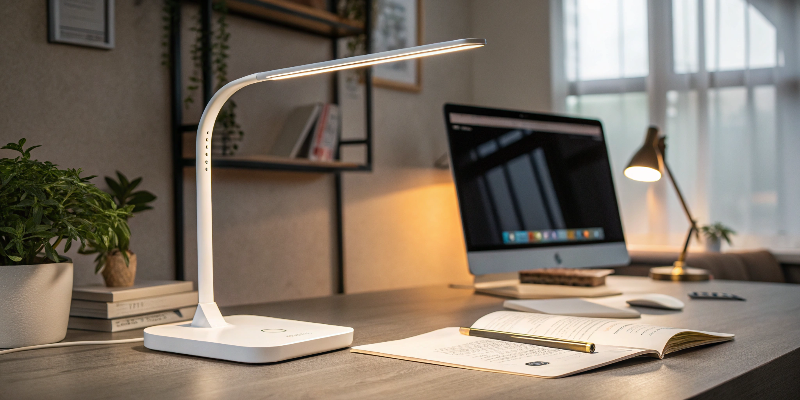
Basic Components of a Desk Lamp
- Power Source: Desk lamps are powered either by electricity or batteries. Most plug-in lamps connect to a standard electrical outlet.
- Bulb: The bulb inside the lamp emits light. In LED lamps, electrical current passes through a semiconductor to generate light.
- Switch: The switch controls the flow of electricity, turning the lamp on or off.
- Reflector and Shade: The shade or reflector helps direct and diffuse the light, ensuring it’s not too harsh while illuminating the workspace.
Understanding how your lamp works can help you troubleshoot issues and get the most from your desk lamp.
Conclusion
Setting up your desk lamp properly can significantly enhance your work environment. With the right positioning, bulb choice, and understanding of your lamp’s features, you can create a comfortable and productive space.


